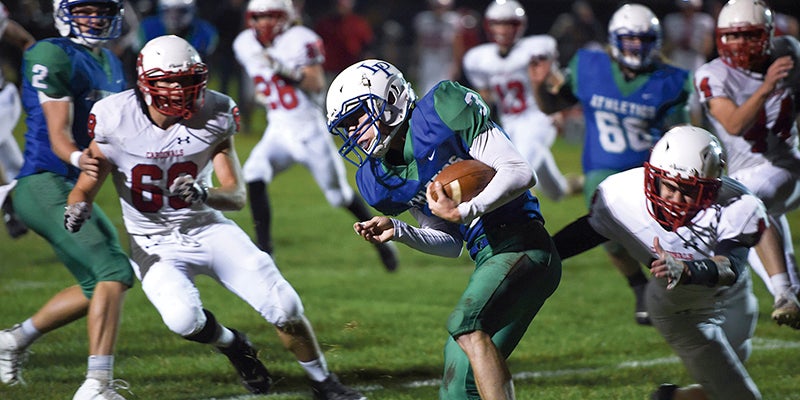Al Batt: “It’s good luck to believe in good luck”
Published 6:38 am Tuesday, January 22, 2019
Echoes from the Loafers’ Club Meeting
This isn’t what I ordered.
I know. I brought you this instead because you wouldn’t have liked what you ordered.
I won’t like this either.
Then it shouldn’t make any difference.
Driving by Bruce’s drive
I have a wonderful neighbor named Bruce. Whenever I pass his driveway, thoughts occur to me, such as: Financial planning wasn’t the big deal it is today during my childhood when the Earth was cooling. My family’s planning was concentrated in basic things like turning off the lights.
I’d barely free myself of a room before my father growled, “Turn off that light. I don’t work for the electric company.”
I’d turn it off, but I was stung by the command. I considered waiting until I’d hear my father’s snoring, getting out of bed and turning that light back on. I’d snigger devilishly while doing so. Dad would never know that I was the one that committed such an outrageous act. I’d planned on tossing a nickel into Dad’s change spread over the top of his bedroom dresser to cover the extra electricity. I never did get up and turn the light on. I always fell asleep before I could.
I think it’s good luck to believe in good luck
I picked up a penny here and a penny there from the ground in New Prague. Two cents of free money. Find a penny, pick it up and all the day you’ll have good luck. Apparently, people in that fine city are throwing their money away.
A man told me that he’d wrenched his back picking up a penny for good luck. Hearing that, his wife slugged him in the arm and told me it was a lie. Maybe he wrenched his back while being punched by his wife?
I carry a worry stone in my pocket. It’s a family tradition. My father carried one. Worry stones are smooth, polished gemstones, usually in the shape of an oval with a thumb-sized indentation, used for relaxation or anxiety relief. The smoothness of the stone is most often created naturally by running water. My father claimed he’d worn the indentation into his stone with his thumb due to farming worries. My worry stone is about half the size of a silver dollar. I hold the stone between my index finger and thumb and move my thumb back and forth the length of the stone. This action might reduce stress. It might not. Other names for worry stones are: palm stones, thumb stones, fidget stones, soothing stones and sensory stones. I hope it might bring a bit of good luck. Buckeyes are distinctive trees, known for their early spring flowers and for the seeds that have inspired the name of this unique family of trees. The nut-like seeds are shiny and dark brown, with a light-colored spot that gives the appearance of a deer’s eye. It’s the nickname of the athletic teams from Ohio State University. The Buckeyes are things my beloved Minnesota Gophers should eat for lunch, but it doesn’t work that way. Sometimes I carry a buckeye in my pocket. A buckeye is supposed to be a good luck charm. My father sometimes carried one of those, too. I’m glad he didn’t carry a horseshoe. Do I believe these things bring good luck? I believe they don’t hurt.
There’s Waldo
Where’s Waldo? It’s a city in Minnesota, Missouri, Wisconsin, Kansas, Ohio, Maine, Kentucky, Florida, Mississippi, Arkansas, Alabama and California.
Nature notes
A customer writes, “A cardinal fought with its reflection in a window of my house. Are there any bird species that realize that it’s a mirrored image in the glass?” I watched a black-billed magpie, a lovely bird that I tend to refer to as a “maggie” or a “pie,” in Alaska. Black-billed magpies understand reflections. Not all birds have been studied in this regard, but we know that not all birds understand. Humans were once thought to be uniquely self-aware. Then chimpanzees, orangutans, dolphins and elephants were found to have the ability to recognize their mirrored images. Some scientists believe that animals living in a complex social world are more likely to share this capability. Members of the crow family, like magpies, are especially interactive. Researchers at Goethe University in Frankfurt, Germany, placed yellow and red stickers on magpies in positions that could be seen only in a mirror. Faced with their reflections, the magpies tried to reach the stickers with their beaks and feet. The conclusion reached by the scientists was that magpies are capable of understanding that an image in a mirror is a self-reflection.
Meeting adjourned
Be famous for your kind words.




